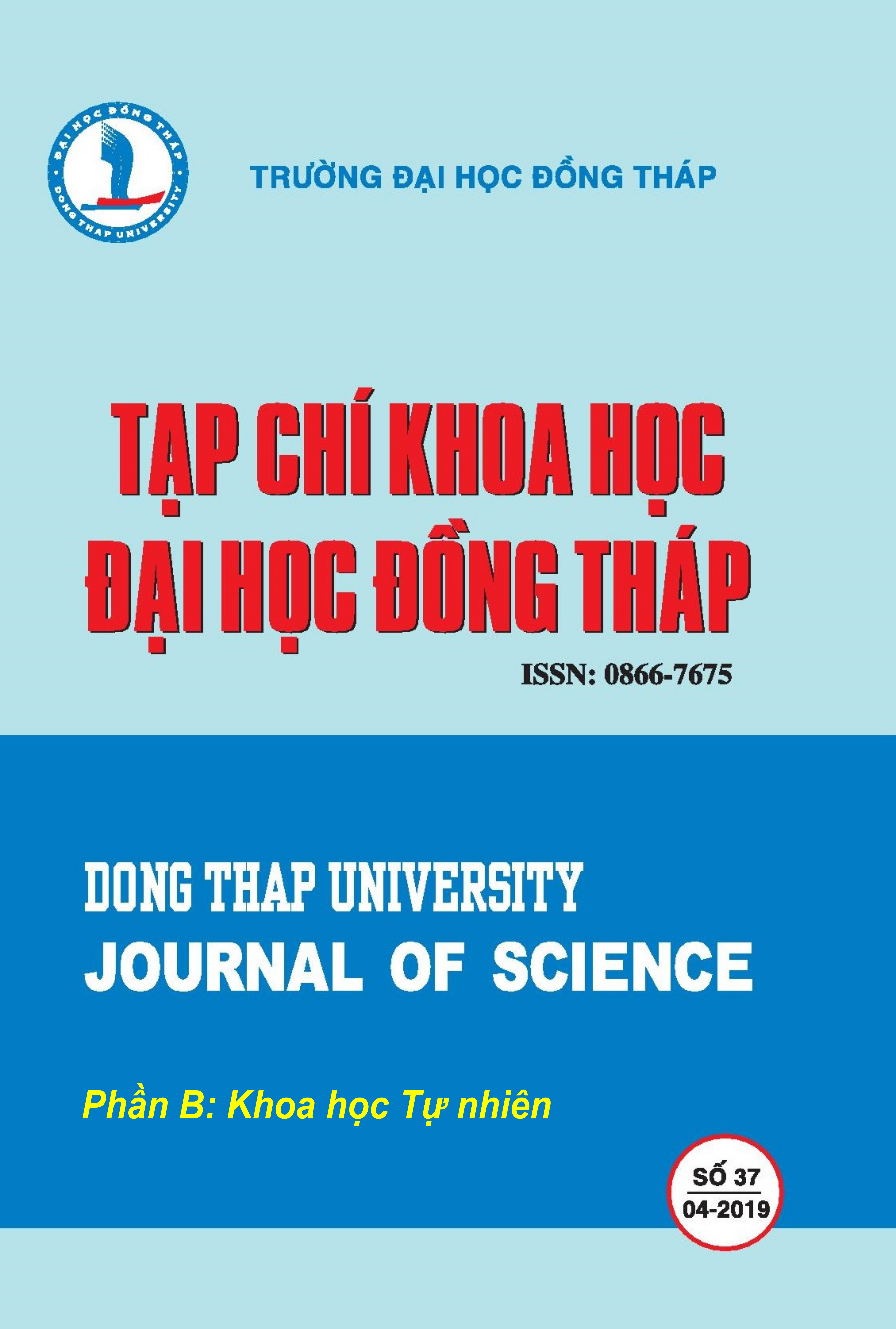Effect of different substrates on the growth and biomass of bloodworm (Limnodrilus hoffmeisteri Claparede, 1862)
Main Article Content
Abstract
The study aimed to determine the optimal substrate for L. hoffmeisteri culture in artificial conditions. The experimental period consisted of 4 treatments (T) randomly designed and replicated 4 times. It included T1 (control): 100% sludge; T2: 50% sludge + 50% chicken manure; T3: 50% sludge + 50% cow dung; and T4: 50% sludge + 25% cow dung + 25% chicken manure. The obtained results showed that L. hoffmeisteri biomass gained between 45.4 - 367g/m2; the highest biomass was found in T2 of 367 ± 39.9 g/m2, while the lowest was recorded in T1. The population density ranged between 53,900 – 87,125/m2; the highest density was found in the T4 of 87,125 ± 14,766/m2 and the lowest one in T2. Thus, it shows that 50% sludge + 50% chicken manure is the optimal substrate for raising bloodworms.
Article Details

This work is licensed under a Creative Commons Attribution-NonCommercial 4.0 International License.
Keywords
Limnodrilus hoffmeisteri, Biomass, manure, substrate
References
[2]. Thái Trần Bái (2005), Động vật học không xương sống, NXB Đại học Sư phạm.
[3]. Davis J. R. (1982), “New Record of Aquatic Oligochaeta from Texas With Observation on Their Ecological Characteristic”, Hydrobiologia, (96), p.15-21.
[4]. Marian M. P., Pandian T. J. (1984), “Culture and harvesting tehnique for Tubifex tubifex”, Aquaculture, (42), p. 303-315.
[5]. Nascimento H. L. S., Alves R. G. (2009), “Effect of temperature on the reproduction of Limnodrilus hoffmeisteri (Oligochaeta,Tubifi cidae)”, Zoologia, 26 (1), p. 191-193.
[6]. Nijboer R., Wetzel M., Verdonschot P. F. M. (2004), “Diversity and distribution of Tubifi cidae, Naididae and Lumbriculidae (Anelida: Oligochaeta) in the Netherlands”, Hydrobiologia, (520), p. 127-141.
[7]. Oplinger R. W., Bartley M., Wagner E. J. (2011), “Culture of Tubifex tubifex: effect of feed type, ration, temperature and density on juvenile recruitment, production and adult survival”, North American
Journal of Aquaculture, 73(1), p. 68-75.
[8]. Poddubnaya T. L. (1984), “Parthenogenesis in Tubifi cidae”, Hydrobiologia, (115), p. 97-99.
[9]. Nguyễn Trọng Sang (2008), Xác định thời điểm thay thế trùn chỉ bằng thịt cá trong ương cá lăng nha (Mystus wyckioides) giai đoạn từ 3 đến 15 ngày tuổi, Khóa luận tốt nghiệp đại học, Trường
Đại học Nông Lâm Thành phố Hồ Chí Minh.
[10]. Shafrudinrao D., Efi yanti W. (2005), “Reusing of Organic Waste from Tubifex sp. Substrate in nature”, Journal Akuakultur Indonesia, 4 (2), p. 97-102.
Most read articles by the same author(s)
- Cong Trang Nguyen, Ngo Yen Loan Dang, Thanh Tung Le, Ngoc Duyen Phan, Benefits and risks of white leg shrimp (Litopenaeus vannamei) farming in fresh water areas in Long An province , Dong Thap University Journal of Science: Vol. 12 No. 2 (2023): Natural Sciences Issue (Vietnamese)
- Minh Que Chau Vo, Cong Trang Nguyen, The current “snake-skin” disease on snakehead fish pond-farmed in Dong Thap province , Dong Thap University Journal of Science: No. 40 (2019): Part B - Natural Sciences
- Cong Trang Nguyen, Quoc Trong Truong, Thi Trang Dai Ngo, Mangrove ecosystem services for local stakeholders in Tien Giang Province , Dong Thap University Journal of Science: No. 29 (2017): Part B - Natural Sciences
- Cong Trang Nguyen, Huu Tru Huynh, Thi Ngoc Tram Truong, Preliminary results from culturing asiatic painted frog (Kaloula pulchra) by different living-feed , Dong Thap University Journal of Science: No. 41 (2019): Part B - Natural Sciences
- Cong Trang Nguyen, Dieu Bao Duy Nguyen, Disease status of Thai frog (Rana tigerina) farmed in Tien Giang and Dong Thap province , Dong Thap University Journal of Science: Vol. 9 No. 3 (2020): Natural Sciences Issue (Vietnamese)
- Cong Trang Nguyen, Problems and solutions to fish cage-culture with combined tourism model in My Tho City, Tien Giang Province , Dong Thap University Journal of Science: No. 28 (2017): Part B - Natural Sciences
- Cong Trang Nguyen, Stakeholders’s awareness of negative impacts by intensive shrimp farming on mangrove ecosystem in the wetland conservation of Thach Phu, Ben Tre Province , Dong Thap University Journal of Science: No. 16 (2015): Part B - Natural Sciences
- Cong Trang Nguyen, Thanh Duy Huynh, Studying propagation of asiatic painted frog (Kaloula pulchra) , Dong Thap University Journal of Science: No. 32 (2018): Part B - Natural Sciences


